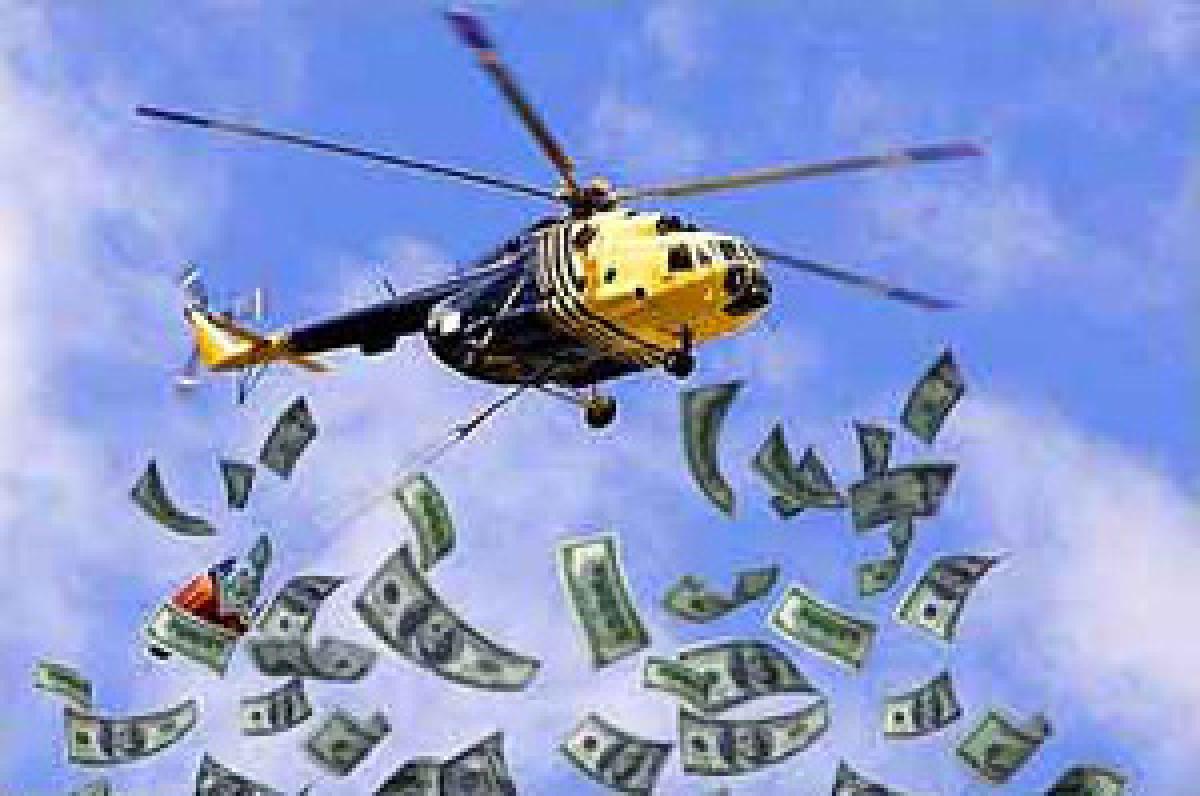Live
- PM Modi highlights govt's efforts to make Odisha prosperous and one of the fastest-growing states
- Hezbollah fires 200 rockets at northern, central Israel, injuring eight
- Allu Arjun's Family Appearance on Unstoppable with NBK Breaks Viewership Records
- Unity of hearts & minds essential for peace & progress, says J&K Lt Governor
- IPL 2025 Auction: I deserve Rs 18 cr price, says Chahal on being acquired by Punjab Kings
- EAM Jaishankar inaugurates new premises of Indian embassy in Rome
- Sailing vessel INSV Tarini embarks on second leg of expedition to New Zealand
- Over 15,000 people affected by rain-related disasters in Sri Lanka
- IPL 2025 Auction: RCB acquire Hazlewood for Rs 12.50 cr; Gujarat Titans bag Prasidh Krishna at Rs 9.5 crore
- Maharashtra result reflects the outcome of Congress' destructive politics: BJP's Shazia Ilmi
Just In

Move over Brexit. The big talk in the financial markets right now is a meeting between former US Fed chairman Ben Bernanke and Japanese Prime Minister Shinzo Abe and his key economic advisors last week.
Move over Brexit. The big talk in the financial markets right now is a meeting between former US Fed chairman Ben Bernanke and Japanese Prime Minister Shinzo Abe and his key economic advisors last week. Bernanke, also dubbed 'Helicopter Ben' since the early 2000s after advocating tax cuts financed by money creation to fight deflation, is a leading academic voice on the rather exotic topic of helicopter money.
Even after pumping in trillions of yen into the financial system and delaying a scheduled sales tax hike to 2019, Japanese policymakers have had little or no effect in restoring growth and inflation. It is important to remember that in terms of the percentage of the monetary base, Japan has undertaken the largest quantitative easing (QE) programme – much larger in relative terms than the US Federal Reserve and the European Central Bank (ECB).
It was actually the legendary Chicago economist Milton Friedman who introduced this concept in 1969 in his paper titled 'The Optimal Quantity of Money.’ Friedman wrote: "Let us suppose now that one day a helicopter flies over this community and drops an additional $1,000 in bills from the sky, which is, of course, hastily collected by members of the community.
Let us suppose further that everyone is convinced that this is a unique event which will never be repeated." In theory, people would see this as a permanent one-off expansion of the amount of money in circulation and would then start to spend more freely, increasing broader economic activity and pushing inflation back up to the central bank's target (which is two per cent in Japan's case).
We are witnessing arguably the most unique conditions in the financial markets: stocks and bonds are both at all-time highs. Trillions of dollars of debt is negative-yielding but fixed income is still the best performing asset class. Some market participants are building long positions in gold as the global economic recovery is running out of steam and more action in terms of cheap money injection is expected from central banks.
But rates can't go much lower than where they currently are and more QE is clearly not the answer – looking at the economic data out of Europe and Japan. Thus, we should expect the talk of helicopter money and its effect on asset markets to be one of the most hotly-debated topics in the financial world in the coming weeks and months.
What do we need to know about helicopter money? Initial introduction and thoughts:
First, we need to understand that in theory, this is a fiscal policy financed by monetary policy – an expansionary fiscal policy financed by the central bank's balance sheet. Unlike debt-financed fiscal programmes, a money-financed programme does not lead to increased future tax burdens. So, it requires the central bank and the government to work together and coordinate policy responses.
This is not always easy as we saw when US debt ceiling stand-offs between Democrats and Republicans in Washington effectively pushed back against the efforts of the Federal Reserve to keep the country's economic recovery on track.
What also follows from the very construct of helicopter money is the scary fact that when governments become used to being able to fund tax breaks or investment projects with newly-printed money, they might decide that the tool is too useful to give up, even in good times.
Secondly, how is this different from QE? And why can it be more helpful to the real economy? Economists argue that the major difference between QE as it has been carried out and helicopter drops as envisaged by Friedman is that the vast majority of purchases have been asset swaps, where a government bond is exchanged for bank reserves. While this has lowered government borrowing costs, its transmission to the real economy has been indirect and underwhelming.
Direct transfers into people's accounts, or monetary-financed tax breaks or government spending would offer one way to increase the effectiveness of the policy by directly influencing aggregate demand rather than hoping for a trickle-down effect from financial markets.
The idea of helicopter money and the framework which policymakers will likely deploy in the coming time may be slightly different from Friedman's idea depending on market conditions as well as the desired objectives. But one thing is certain. If QE fails, helicopter money will be dropped by major global central banks.
By Vatsal Srivastava

© 2024 Hyderabad Media House Limited/The Hans India. All rights reserved. Powered by hocalwire.com







